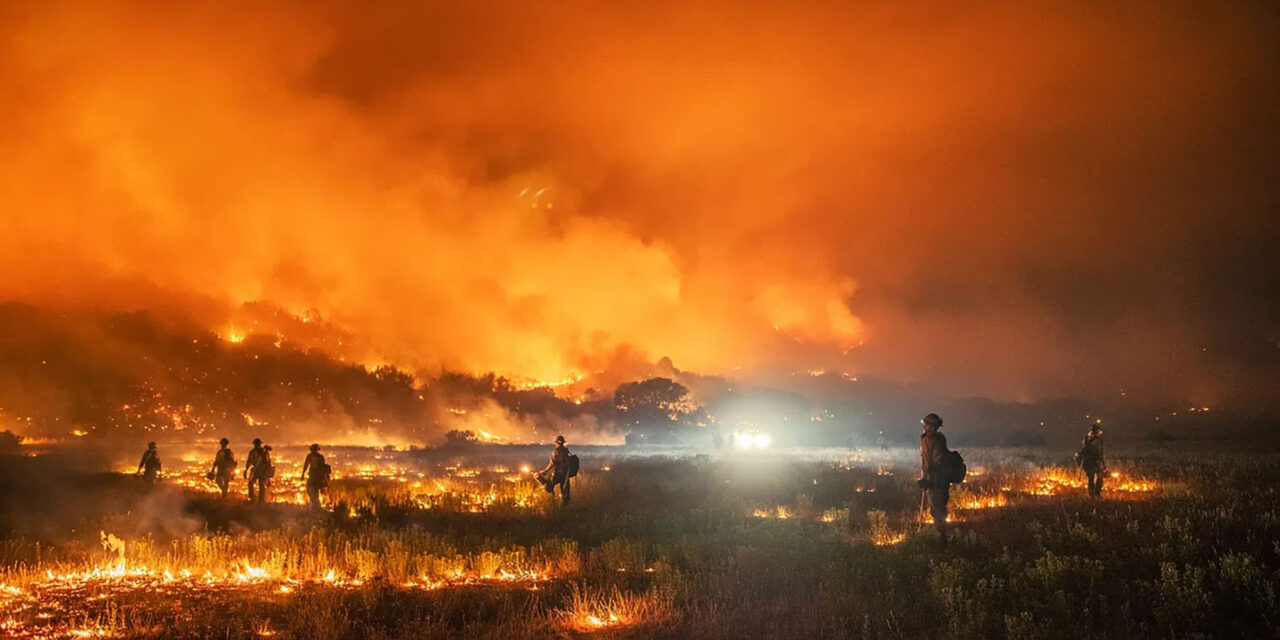Image from Creative Commons
On Aug. 9, Lieutenant Governor Sylvia Luke issued a state of emergency in Maui and Hawaii that still continues today. The Hawaiian island of Maui, specifically the city of Lahaina has been on fire since early August of this year. 115 people have died from the fires and over 850 people have yet to be found.
Lahaina once served as the capital of Maui before the unification of Hawaii. A once historically rich island, Maui has suffered a great loss of centuries old artifacts including The Baldwin Home Museum, the oldest house in Maui, the Waiola Church and countless other historical sites. On top of this, many artifacts have been damaged or destroyed as a result of the fire such as an original native Hawaiian kingdom flag. Many day to day objects made by Native Hawaiian people have also been lost to the fires. Objects like featherwork, furniture, photographs and kapa, a type of fabric used to make rugs, skirts and blankets.
There has not been a singular cause for the fires, bbut some experts theorize that the low humidity and strong winds brought in by Hurricane Dora are some factors that contributed to the fire’s power. The 45 mile per hour winds downed power lines and is reported to have started some local fires. Almost 16 percent of the island had previously experienced extreme drought before the fires started. The first reported fire in Maui County was a brush fire in the Olinda Road area of Kula on Aug. 7, 2023 where the forest burned through almost 700 acres of land and destroyed 19 houses.
Non-native invasive plants have also been cited as fuel for the wildfires. The The Hawaii Invasive Species Council has named 79 non-native plant species that were brought to the islands by non-natives. Grasses such as guinea grass, molasses grass and buffel grass are just some of the few species of plants brought to Hawaii by colonizers as food for livestock. These grasses now cover nearly 25%of the land mass in Hawaii. These plants grow fast in rains and are drought resistant making them the ideal fuel for these fires.
The fires have displaced over 2,200 people destroying over 4,500 homes. With such short notice to leave, many Maui natives have nowhere to go. Governor Josh Green stated that 1,000 hotel rooms are being used to house residents who lost their homes and first responders from the Federal Emergency Management Agency.
Maui water officials have also issued a warning for the residents of Lahaina and Kula not to drink the running tap water even after boiling, due to chemical exposure. Toxic particles and fumes are still so high that Lahaina residents are being urged to wait longer to return. Diana Felton, the state toxicologist, told Hawaii Public Radio the cleanup will take weeks or months before it is safe.
Bobby Lee, president of the Hawaii Firefighters Association (HFFA) reports that there are “a maximum of 65 county firefighters working at any given time with responsibility for three islands: Maui, Molokai and Lanai.” The HFFA consists of the Honolulu Fire Department, the Kauai Fire Department, the Maui County Department of Fire Control, the Hawaii County Fire Department and the State of Hawaii Aircraft Rescue and Fire Fighting Division. The department only has 13 fire engines and tow ladder trucks along with 1,900 active firefighters.
Though Hawaii has been in a state of emergency for weeks now, tourism throughout the state, especially Maui is still continuing. Maui Snorkeling Lani Kai, a snorkeling company, continued to run tours off the coast of Maui despite numerous reports of dead bodies being in the water.
Natives have been urging tourists not to come to Hawaii or Maui as they recover from the devastation of the fires. Tourism has added to many of the state’s other issues – severe housing crisis, water shortages, environmental degradation and the dilution of Native Hawaiian culture. Famous Hawaiian natives, Jason Mamoa and Auli’i Carvalho have also urged tourists to stay away from the island as well as raising awareness about the wildfires and providing notable organizations to donate to in order to help locals.
Over the past 60 years, more than 100 acres of Kihei’s wetlands, a coastal area of Maui, went from a tiny rural town to one of Hawaii’s busiest tourist destinations. Kihei is one of many examples of Native Hawaiins being pushed out by the government in the name of tourism. State and local governments in Hawaii are currently considering prohibiting the sales of damaged and/or destroyed properties in order to prevent non-Hawaiins from taking more housing away from Natives.
Hawaii is an extremely unique kingdom that has vast flora and fauna that is being destroyed by these wildfires. Over 1,000 acres in Maui have been burned down damaging countless irreplaceable artifacts, history and culture on top of displacing the natives of the island. Many organizations are working to help those displaced and affected from the wildfires including food and clothing drives as well as donations among other things.
Organizations to donate to:
The Hawaii Fire Fighters Association and the California Fire Foundation Maui Wildfire Relief Fund:
https://cpf.salsalabs.org/MauiWildfireRelief2023/index.html
Maui Strong Fund:
https://www.hawaiicommunityfoundation.org/maui-strong
Ho‘ōla Maui Fund:
https://www.ksbe.edu/hoola-maui
Donate to the KS I Mua Maui Fund:
https://www.ksbe.edu/hoola-maui
Kāko‘o Maui fund
https://www.ksbe.edu/hoola-maui


